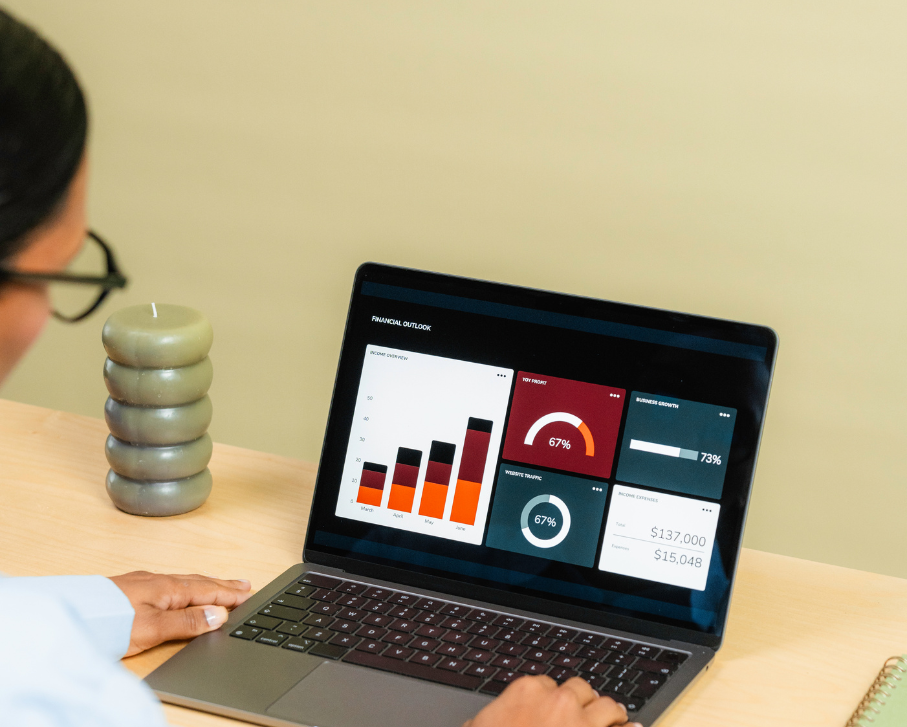
Critical decisions, from when to hire, to whether you can afford to launch a new product, depend on having visibility and control of the financial state of the business in real time.
In this article, we explain what financial monitoring you should implement. weekly and monthly to keep your startup under control, avoid surprises and anticipate key decisions.
WEEKLY financial monitoring: focus on cash, collections and operations
Weekly monitoring has a clear objective: guarantee liquidity and detect possible deviations before they become major problems. It's not about doing an in-depth accounting analysis, but about keeping an agile pulse on the business's finances, including:
1. Weekly operating cashflow review
The weekly cash flow allows you to clearly see how much money has been in and out of your accounts. It is essential that you have identified three elements:
- Income collected and expenses paid during the week.
- Current cash balance on account.
- Payment and collection commitments scheduled for the following week.
Agile cashflow management gives you peace of mind and allows you to anticipate. If you find that you're not going to charge for a key project on time, you can rearrange payments or talk to suppliers. Using treasury tools or simple, well-designed spreadsheets can make a big difference.
💡 advice: Always work with a conservative scenario (what happens if you don't charge as expected) to prepare for potential customer delays.
2. Control of collections and payments
Review your weekly aging of customers and suppliers it will help you to have visibility on who owes you money and to whom you owe it. Not only does this improve your liquidity, but it also allows you to make operational decisions.
For example, if you detect that a strategic customer is starting to pay later than usual, you can proactively contact or adjust your own payments to suppliers.
The goal here is reduce financial disorder and avoid unpleasant surprises at the end of the month.
3. Tracking key financial KPIs
You don't need a dashboard with 25 metrics. But you should be clear about at least these five indicators:
- Invoiced and/or collected revenues.
- Variable costs linked to sales.
- MRR (if you work on a SaaS model).
- Estimated weekly CAC.
- Available box and remaining runway.
These KPIs give you a clear view of whether you are growing profitably or if, on the contrary, you are entering a spending spiral.
MONTHLY financial monitoring: focus on profitability, efficiency and strategy
While weekly monitoring helps you stay on track from day to day, monthly monitoring takes a more analytical and strategic approach. It allows you to make informed decisions about business growth, investment and sustainability.
1. Profit and Loss Analysis (P&L)
The income statement helps you understand how your business evolves structurally. It's not just about seeing how much you've billed, it's about understanding:
- How income varies compared to previous months.
- What deviations exist compared to the budget.
- How your gross and net margins are evolving.
For example, an increase in revenue may seem positive, but if your costs grow faster, your margin shrinks and growth stops being healthy. This analysis allows you to adjust prices, cut costs or prioritize more profitable lines.
2. Box and runway variation
It's not enough to know how much you have in your box, you need to understand how it's evolving. Has your balance increased or decreased compared to the previous month? What was the cause?
🧮 Example: For example: if your cash flow has dropped from 100,000€ to 70,000€, and your monthly burn has gone from 20,000€ to 30,000€, you are reducing your runway from 5 months to just over 2. In that case, it's time to review expenses or start preparing a funding round.
This monitoring allows you to adjust your strategy and make decisions in advance.
3. Fixed and variable costs per unit
Analyzing your unit costs, by customer, order or product, gives you a direct reading of your operational efficiency. If each sale costs you more than the previous month, you may need to renegotiate with suppliers or automate processes.
In businesses with tight margins, any improvement in efficiency translates directly into profitability. In addition, this data helps you validate if your pricing is still competitive and profitable.
Useful tools to simplify this control
Although it may seem complex, today there are many tools that allow you to do this monitoring in a much more orderly and transparent way:
- Holded or Quipu: to keep your billing, bank reconciliation and accounting control in a simple way.
- Google Sheets/Notion: if you prefer to build your own customized dashboards.
- Fintonic Business or Banktrack: to have daily visibility on cash flow and cash flows.
- Intelectium External CFO 😉 if you want to have an expert team to do this monitoring for you, with reporting adapted to investors or growth.
Conclusion: Without financial control, there are no smart decisions
Your business may be growing, turning a profit or even raising investment. But if you don't know how much you're spending, when you need to raise capital or how your margin evolves, you'll be managing blindly, with no real capacity for maneuver or anticipation.
Financial control isn't a matter for the accounting team, it's a leadership tool. It allows you to anticipate, make safer decisions and build trust: with your team, your partners and investors.
.png)
.png)






















